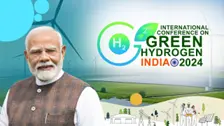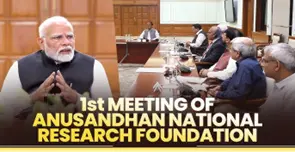Monday, 16th September 2024
NSE co-location case
Why in the news ?
- The Securities and Exchange Board of India (SEBI) has dropped charges against the National Stock Exchange (NSE).
- SEBI had previously ordered the NSE to disgorge Rs 624.89 crore and barred the officials from associating with listed companies or market intermediaries for five years

National Stock Exchange of India (NSE):
- About:
- Established in 1992 and launched in 1994, NSE is India’s largest financial market, based in Mumbai.
- It introduced automated trading systems and increased transparency and efficiency by replacing them with an open acquisition system.
- Market Capitalization:
- As of December 2023, the NSE ranks as the sixth largest stock exchange in the world by market capitalization.
- As of January 2024, the combined market capitalization of NSE and BSE reached $4.33 trillion, making India the fourth largest stock market.
- Special Features:
- Nifty 50: The NSE benchmark index, representing India's 50 largest liquid companies.
- Electronic Commerce: Pioneered complete, screen-based electronic commerce, improving accessibility and efficiency.
- Market segments: Provides trading of equities, derivatives, income, and expenses.
- Legal Review: SEBI regulates the NSE, ensures compliance and maintains fair market practices.
- Comment on shared space:
- During 2012-2014, allegations surfaced that NSE allowed arbitrary access to some brokers through the co-location (KOLO) facility, resulting in faster data transmission and possible market volatility
- Traders using co-location servers had a speed advantage, which was important for high-frequency trading that resulted in inappropriate behaviour.
- A whistleblower raised concerns about dramatic market manipulation through "dark fiber" in 2015.
- Non-empaneled ISPs allegedly connected fiber networks to selected brokers, further compounding the issue.
SEBI releases NSE and officials in the co-location issue:
- Prior scrutiny of evidence: SEBI’s latest order has revealed that a preliminary investigation by the Securities Appellate Tribunal (SAT) has not found any irregularities committed by NSE or its employees.
- Absence of evidence of collusion: SEBI concluded that there was no evidence of conspiracy or collusion, hence demanding greater weight of evidence.
- OPG Securities and Secondary Servers: SEBI found that although OPG Securities retained access to the secondary server, 93 other members did the same, reducing the possibility of consolidation.
Source: BS
Government issued guidelines for viability gap funding
Why in the news?
- Recently, the Ministry of New and Renewable Energy (MNRE) notified guidelines that are a step towards implementation of the National Offshore Wind Energy Policy, 2015.
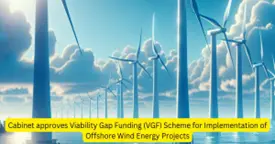
About the VGF Scheme for Offshore Wind Energy Projects:
- 1000 MW offshore wind power installation Industry off the coast of Gujarat and Tamil Nadu (500 MW each). (Cost: ₹ 6853 million)
- The VGF will be delivered through FY 2031-32.
- Upgrading both ports to meet logistics needs Requirements. (Cost: ₹ 600 million)
- Implementation: Through MNRE of Solar Energy Company of India Limited (SECI) as the Implementing Agency.
- National Institute of Wind Energy (NIWE) will act as a nodal agency, providing technical expertise which helped establish and commission it the performance of services.
- Application Type: Competition Cost of international selection Competitive bidding by SECI.
- Alternative Greenshoe option composite allocation option (500 MW plus 50 MW)
About Offshore Wind Energy:
- Probability in India: 7600 km Extensive Economic Zones (EEZs).
- Importance: Important in product renewable Energy target of 500 GW installed 2030, deals with issues such as land availability.
- Challenges: The cost per megawatt of an offshore turbine is higher due to complex structures and Bases required, high corrosion, and negative effects on marine ecosystems.
Source: ET
Agreement on Fisheries Subsidies
Why in the News?
- Recently,Small-scale fishers had expressed significant concerns about the current World Trade Organisation (WTO) proposed text on fisheries subsidies.
Depletion of the World’s Fish Stocks:
- The WTO, an estimated 37.7% of the world's fish stocks are overfished now, compared to 10% in 1974.
- $35 billion of government funding is allotted to fishing, of which an estimated $22 billion goes towards increasing the amount of fishing that is not sustainable.
- Among the main subsidies are China, the EU, the US, South Korea and Japan.
- The government of India estimates that each fisher family receives less than $15 in subsidies per year.
What is the WTO Agreement on Fisheries Subsidies?
- Adopted at the 12th Ministerial Conference (MC12) in 2022, it marks a major step forward for ocean sustainability.
- It prohibits harmful fisheries subsidies, which are contributing to overcapacity and over fishing and are a key factor in the widespread depletion of the world’s fish stocks.
- The Agreement represents a historic achievement for the membership as -
- The first Sustainable Development Goal (SDG) target to be fully met,
- The first SDG target met through a multilateral agreement,
- The first WTO agreement to focus on the environment,
- The first broad, binding, multilateral agreement on ocean sustainability, and
- Only the second agreement reached at the WTO since its inception.
- For the Agreement to become operational, two-thirds of members have to deposit their “instruments of acceptance” with the WTO.
Concerns Regarding the Fisheries Subsidies Agreement Raised by India:
- Discriminates against poorer countries:
- India draws attention to important gaps that could support unsustainable fishing practices, especially by large-scale industrial fishing nations.
- For example, the proposed text allowed advanced fishing countries with better monitoring and notification capabilities to avoid commitments to cut harmful subsidies.
- Differential treatment provisions:
- The proposed special and differential treatment provisions for small-scale fishers are considered inadequate.
- They are of non-industrial characteristics, which do not address the core issue of industrial fishing.
Way Ahead:
- Large-scale industrial fishing fleets engaged in deep-sea fishing should be adequately restrained by subsidies.
- Aiming to expand fishing capacity should not be discouraged by the support offered by developing nations and LDCs.
- Small-scale fishers are advocating for stronger backing of sustainable fishing practices and more effective reduction of industrial fishing subsidies.
Source: BS
Port Blair renamed as Sri Vijaya Puram
Why in the news ?
- The Centre has decided to rename Port Blair as Sri Vijaya Puram to shed its colonial legacy and recognize the Andaman and Nicobar Islands' role in India's freedom struggle.
- While Ross Island was rechristened as Subhash Chandra Bose Dweep (island), Neil Island was renamed Shaheed Dweep and Havelock Island as Swaraj Dweep.

Process to rename a state:
- Constitutional provision
- The Constitution of India gives the parliament power to under Article of the Constitution explicitly lays down a procedure to alter the area, boundaries, or name of a state.
- Proposal
- The state legislature sends a proposal in the form of a resolution to the Central government.
- The bill cannot be presented without a recommendation from the President, who then refers it to the state legislature for their views.
- Procedure
- The State Legislature may present its views on the bill within the prescribed time period.
- If Parliament wants, it can dismiss the opinion of the state legislature.
- After receiving the suggestions of the State Legislative Assembly or after the expiration of the limited time period the bill goes back to the Parliament.
- Passing of the bill
- The bill like any ordinary bill must be passed with a simple majority of 50%+1 vote.
- Sent to the President for approval and gets approved, it becomes a law and the name of the state stands modified.
Colonial background of Port Blair:
- Origins of Port Blair: Named After Lieutenant Archibald Blair
- In December 1778, Blair embarked on his first surveying expedition to the Andaman Islands from Calcutta with two ships, Elizabeth and Viper.
- The voyage, lasting until April 1779, took Blair around the west and east coasts of the islands, where he discovered a natural harbour.
- Initially, he named it Port Cornwallis, after Lord William Cornwallis. The island was later renamed in Blair’s honour.
- Establishment of a Penal Colony in 1789
- In 1789, the Government of Bengal founded a penal colony on Chatham Island, in the Great Andaman southeast bay, naming it after Blair.
- However, the British had abandoned it by 1796 because of disease.
- Cellular Jail
- The British built the Cellular Jail(1906), also known as Kala Pani (Black Waters), to house Indian convicts, mostly political prisoners, in solitary confinement.
Port Blair’s connection with the imperial Cholas and Srivijaya
- Used as a strategic base by the Chola emperor
- Srivijaya was the ancient name of an empire that had its base in Sumatra.
- The Andaman Islands were used as a strategic naval base by the Chola emperor Rajendra I in the 11th century.
- It was used to launch an attack on the Srivijaya Empire, located in present-day Indonesia.
- Due to Srivijaya obstructing Chola trade or Rajendra I’s ambition with Southeast Asia (under their Look East Policy).
- Bay of Bengal was transformed as ‘Chola lake’ and trading centres such as Nagapattinam were established
- Inscription at Thanjavur and the name of Nicobar Island
- As per an inscription found at Thanjavur dated to 1050 CE, the Cholas referred to the island as Ma-Nakkavaram land (great open/ naked land), which possibly led to the modern name of Nicobar under the British.
Source: IE
INDUS-X Summit
Why in the news ?
- The third edition of India-US Defence Acceleration Ecosystem (INDUS-X) Summit recently concluded in the USA.
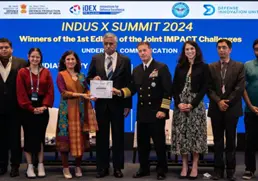
About INDUS-X Summit:
- Launched in 2023 during the Indian Prime Minister’s state visit to the USA.
- Objective: To expand strategic technology and defence industrial partnerships between India and the US, involving governments, businesses, and academic institutions.
- Focus: On innovation funds, academia engagement, industry-startup collaboration, private investment, expert mentoring, and niche technology projects in the defence sector.
- Aims: to explore co-production of jet engines, long-range artillery, and infantry vehicles.
- Steered by Innovations for Defence Excellence on behalf of the Ministry of Defence and Defence Innovation Unit under the U.S. Department of Defense.
Innovations for Defence Excellence (iDEX):
- Launched in 2018 by India’s Ministry of Defence.
- Objective: Cultivate an innovation ecosystem in defence and aerospace by collaborating with startups, MSMEs, and academia.
- Provides grants and R&D support for future defence adoption.
- Funding: Managed by Defence Innovation Organization (DIO), a non-profit company formed by DPSUs HAL and BEL.
Source: PIB
Trilobites
Why in the news ?
- Recently, new study finds that a trilobite species with exceptionally well-preserved fossils from upstate New York has an additional set of legs underneath its head.
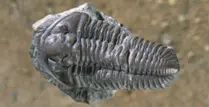
What are Arthropods?
- They are a group of extinct marine arthropods and Tri-lob-ite means three-part-body in Latin.
- Arthropods are invertebrates with a hard exoskeleton, a segmented body and jointed appendages.
- They make up about 75% of all animals on Earth.
- Arthropods are represented in every habitat on Earth and show a great variety of adaptations.
- Arthropods are divided into four major groups:
- Insects;
- Myriapods (including centipedes and millipedes);
- Arachnids (including spiders, mites, and scorpions);
- Crustaceans (including slaters, prawn, and crabs).
Features:
- Recognized by their distinctive three-lobed, three-segmented form.
- Trilobites, like other arthropods, had an external skeleton, called exoskeleton, composed of chitinous material.
- Trilobites periodically shed their exoskeleton to accommodate growth called moulting.
- The first group of animals in the animal kingdom to develop complex eyes.
- The first organisms to develop multiple appendages for moving around.
- Some trilobites could swim, others burrowed or crawled around on muddy sea floors.
- Smallest trilobite fossils are a cm or less in size & largest trilobites were more than 70 cm long.
Source: TH
Assam cascade frog
Why in the news ?
- Recently, Scientists from the Wildlife Institute of India studied the Amolops formosus in two Himalayan streams of the Churdhar Wildlife Sanctuary in the Sirmour district

About Assam cascade frog:
- It is mainly distributed across the Himalayan belt in India and found in high-flowing and gradient streams of northern Bangladesh, Bhutan and Nepal.
- The genus Amolops comprises 72 distinct species distributed throughout the hilly regions with fast-flowing streams in southern and Southeast Asia.
- Amolops are highly adapted to fast-flowing hill streams because they have adhesive disks on the tips of their digits with circum-marginal grooves that help them stick to rocks and other substrates.
- Other names: Assam sucker frog, beautiful stream frog, Assam cascade frog or hill stream frog.
- Conservation status
- IUCN: Least Concern
About Churdhar Wildlife Sanctuary:
- It is a small reserve located at the top of Churdhar Peak in the foothills of the Himalayas, amidst alpine trees and green pastures in Himachal Pradesh.
- Flora: It is renowned for being a habitat of herbal medicine trees and plants. Wild Himalayan Cherry, Aloe Vera (Dhrit Kumari) and Amaranthus spinosus (Chulai). The main trees in the sanctuary are oak and deodar.
- Fauna: Musk Deer, Barking Deer, Himalayan Black Bear, Leopards and Langur.
Source: TH
Chamran-1 Research Satellite
Why in the news ?
- Recently, Iran has successfully launched its research satellite, Chamran-1.
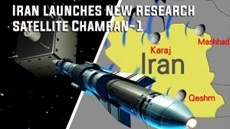
About the Chamran-1 Research Satellite:
- It is an Iranian research satellite designed by Iranian engineers at Iran Electronics Industries (SAIran), in collaboration with the Aerospace Research Institute and private firms.
- The satellite was launched into orbit at 550 kilometres altitude aboard the Ghaem-100 Space Launch Vehicle (SLV), manufactured by the IRGC Aerospace Force.
- It is Iran's first three-stage solid-fuel satellite launcher.
- Weighing 60 kilograms, Chamran-1's main mission is to test hardware and software for orbital manoeuvre validation.
- It also evaluates cold gas propulsion and navigation subsystems in space.
Source: TOI
Edible Oil Scenario in India
Why in the news ?
- The Ministry of Finance recently increased the import duty on edible oils from 0% to 20%, bringing the total effective duty, after including other components, to 27.5%.
- The Centre also announced soybean procurement at Minimum Support Price (MSP) in four states—Maharashtra, Madhya Pradesh, Karnataka, and Telangana.
Edible Oil Scenario in India:
- About Edible Oils:
- Edible oils are primarily vegetable oils that undergo several refining processes to remove impurities.
- These oils are generally considered healthier alternatives to animal fats due to their higher content of unsaturated fatty acids.
- Current Edible Oil Availability
- India contributes 5-6% to the global oilseeds production, with 41.35 million tons (MT) of nine cultivated oilseeds produced in 2022-23.
- Exports of oil meals, oilseeds, and minor oils amounted to 3.46 MT in FY 2022-23, valued at ₹14,609 crores.
- India is the world’s second-largest consumer and the top importer of vegetable oil, meeting 55-60% of its demand through imports due to a production shortfall.
- Palm oil accounts for 62% of edible oil imports, mainly from Indonesia and Malaysia.
- Soybean oil (22%) is sourced from Argentina and Brazil, and sunflower oil (15%) comes from Ukraine and Russia.
- Overall scenario of edible oil availability in India:
Area and production of oil seeds in India:
Report on ‘ Edible Oils Towards Atmanirbharta’:
- About the Report
- Released by NITI Aayog, this report examines the edible oil sector’s current state and potential for self-sufficiency.
- Key Highlights:
- Per capita edible oil consumption has risen to 19.7 kg/year.
- Despite increasing demand, domestic production only meets 40-45% of the total requirement, leading India to import 16.5 MT of edible oils in 2022-23.
- Roadmap for Self-Sufficiency:
- Supply growth projections: India’s edible oil supply is projected to reach 16 MT by 2030 and 26.7 MT by 2047 under a Business-As-Usual (BAU) scenario.
- Strategic Interventions:
- Crop retention and diversification.
- Horizontal expansion: Bringing more land under oilseed cultivation.
- Vertical expansion: Enhancing yields through better seeds, farming practices, and technology.
- Dynamic trade policies for balanced growth.
- Expanding the scope of the National Mission on Edible Oils to support self-reliance.
Government Initiatives:
- National Mission on Edible Oils-Oil Palm:
- Launched to increase domestic oil production, focusing on northeast regions and Andaman & Nicobar Islands, with a goal of expanding 6.5 lakh hectares for palm oil by 2025-26.
- Data Management:
- The Directorate of Sugar & Vegetable Oils has created a web-based platform (evegoils.nic.in) for better data management and tracking of oil production.
|
UPSC Civil Services Examination, Previous Year Questions (PYQ) Prelims Q1. Consider the following statements: (2018)
Which of the statements given above is/are correct?
Ans: (a)
Q2. Other than resistance to pests, what are the prospects for which genetically engineered plants have been created? (2012)
Select the correct answer using the codes given below:
Ans: C Q3. Bollgard I and Bollgard II technologies are mentioned in the context of (2021)
Ans: (b) Mains Q:1 How can biotechnology help to improve the living standards of farmers? (2019) |
Source: ET
Share the article
Edukemy’s Current Affairs Quiz is published with multiple choice questions for UPSC exams
MCQ
Get Latest Updates on Offers, Event dates, and free Mentorship sessions.

Get in touch with our Expert Academic Counsellors 👋
FAQs
UPSC Daily Current Affairs focuses on learning current events on a daily basis. An aspirant needs to study regular and updated information about current events, news, and relevant topics that are important for UPSC aspirants. It covers national and international affairs, government policies, socio-economic issues, science and technology advancements, and more.
UPSC Daily Current Affairs provides aspirants with a concise and comprehensive overview of the latest happenings and developments across various fields. It helps aspirants stay updated with current affairs and provides them with valuable insights and analysis, which are essential for answering questions in the UPSC examinations. It enhances their knowledge, analytical skills, and ability to connect current affairs with the UPSC syllabus.
UPSC Daily Current Affairs covers a wide range of topics, including politics, economics, science and technology, environment, social issues, governance, international relations, and more. It offers news summaries, in-depth analyses, editorials, opinion pieces, and relevant study materials. It also provides practice questions and quizzes to help aspirants test their understanding of current affairs.
Edukemy's UPSC Daily Current Affairs can be accessed through:
- UPSC Daily Current Affairs can be accessed through Current Affairs tab at the top of the Main Page of Edukemy.
- Edukemy Mobile app: The Daily Current Affairs can also be access through Edukemy Mobile App.
- Social media: Follow Edukemy’s official social media accounts or pages that provide UPSC Daily Current Affairs updates, including Facebook, Twitter, or Telegram channels.


